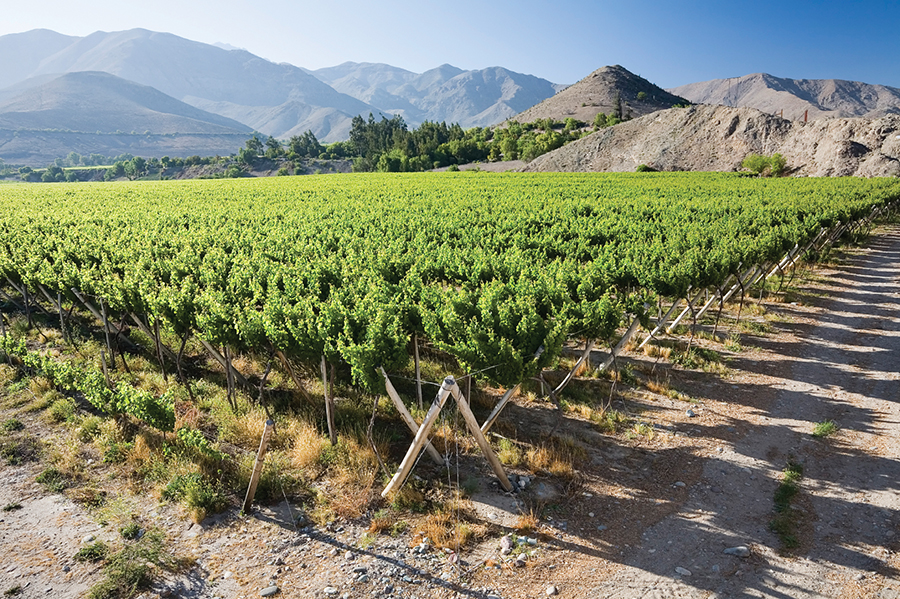By Matthew DeBord
HQ 80 | WINTER 2013
The wine world has changed greatly in the past 30 years. In the early 1970s, wine basically came from one place — Europe — and from only about four countries in that one place. France was the top of the heap, followed by Italy and Spain. Germany and Portugal tagged along.
Since then, three other major wine regions have emerged: the U.S., and specifically California; Australia; and South America. Collectively, these regions are known as the “New World,” versus Europe’s “Old World.”
South America is interesting, in the context of these newcomers, for a couple of reasons. First, it’s not as if all of South America is making and exporting wine. As in the U.S., South American winemaking is concentrated in a few regions. Second, South America doesn’t offer incredible diversity with its wines. But the wines it does produce are increasingly world class.
The two most important countries are Chile and Argentina. Chile produces a wider variety of wines that end up being exported. The country — a long, narrow strip of land that runs along the Pacific coast and resembles a skinny California — is kind of a mash-up of France, Spain and the U.S., as far as its winemaking goes. In fact, American, French and Spanish vintners have all established collaborations or set up shop in Chile, to take advantage of the country’s unique winemaking potential.
Chile’s signature wine is Cabernet Sauvignon, produced in a style that’s a hybrid of French and Californian. Chilean Cabs aren’t generally as fruit-forward as Cali Cabs, but they’re far more opulent than French red wines that are Cabernet-based. Depending on the part of Chile where the grapes were grown, Chilean Cabs can exhibit interesting mint and green vegetable notes. That might sound weird, but when it comes to Chilean Cabs, it definitely works.
On the white side, you’ll find plenty of Chardonnay and Sauvignon Blanc from Chile. Of the two, I tend to prefer the Sauvignon Blancs, although relative to California, the Chards can be a good value. They also tend to be excellent food wines that really shine during the summer months, when the barbecues are going and the weather calls for pleasant sipping wines that aren’t too heavy or complex.
You can look for wines from Casa Lapostolle or Concha Y Toro, probably the two best-known producers in Chile. Both crank out a range of wines, from simple whites and budget-oriented reds to higher-end bottlings that really show what Chile is capable of.
Moving over the Andes mountain range, you leave Chile and enter Argentina. Here, something unusual happened as the country’s winemaking culture evolved. Wine in Argentina has two European roots: France and Italy. As a result, wine has always been consumed in Argentina on a European scale. Argentines love their red meat, and they love to wash it down with red wine.
In Argentina, the most famous wine is Malbec. This is a grape that originally comes from France and is typically a minor blending component of Bordeaux. In southwestern France, it goes into a wine called Cahors, which is a rustic red that goes well with the rich cuisine of that region. The French don’t really rank Malbec as high as Cabernet or Merlot on the quality scale.
In Argentina, however, Malbec is king. Here, it produces world-class reds that can go toe-to-toe with prestigious reds from the Napa Valley, Bordeaux and Italy.
These are powerful, rich, complex reds that get along very well with steaks and have become a popular choice at steakhouses, along with California Cabs.
When shopping, keep an eye out for Malbecs from Catena Zapata, Gascon and Trapiche. The region you’ll encounter most frequently is Mendoza, from whence the bulk of Argentina’s Malbec emanates. There’s also a decent amount of white wine that’s produced in Argentina, but generally speaking, you’re more likely to find reds, and mostly Malbecs, in most wine stores and on grocery store shelves.
The other South American countries that produce wine and export it are Uruguay and Mexico (although a lot of people don’t consider Mexico to be a South American country). The wines are tough to find, however. And they’re not as evolved as what Chile and Argentina produce.
South American wines have been criticized in the past for being more about price and quantity than quality. Both Argentina and Chile produce quite good but not awesome wines. However, in the past 10 years or so, the wines of both countries have started to move into the true big leagues. So while in the 1990s Argentina and Chile could be counted on for pretty good, pretty cheap Cabs and Chards and Malbecs, now they can be counted on for that plus wines that are competitive with the best that France, California, Australia and Italy have to offer.
I’m personally very fond of Malbecs. For my money, these are the best steak wines around. And luckily, they tend to be a lot cheaper than big steak wines from California or France, making it possible to almost have a “house” steak wine. So if grilling meat is your thing, the wines of South America may just what you’re looking for.





